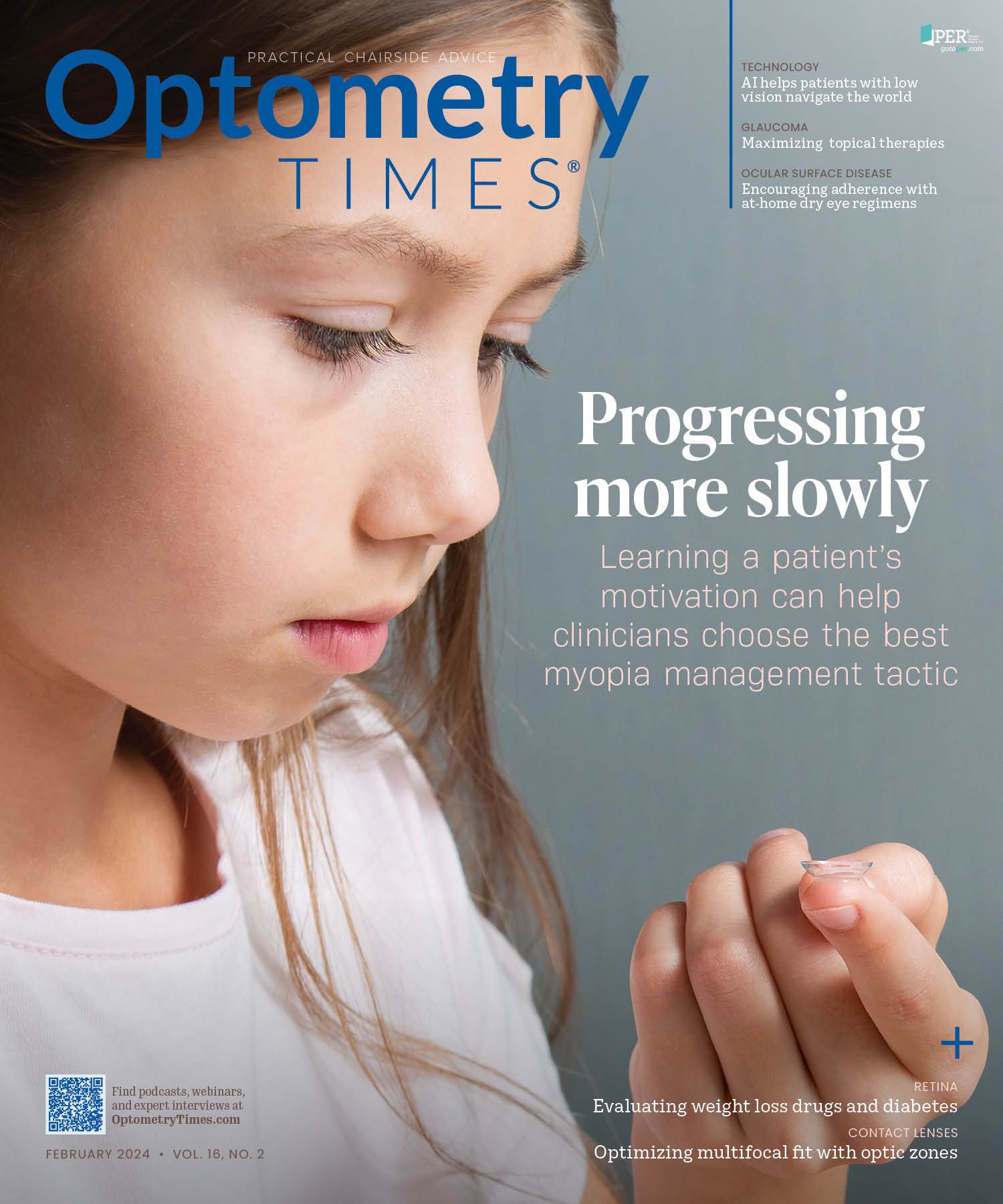Pharmacologic weight loss for diabetes management: The good, the bad, and the ugly
This article outlines which medications may be best to take to mitigate the onset of type 2 diabetes through weight loss, in addition to lessening sugar intake and other eating habits.
Image Credit: AdobeStock/9dreamstudio

Risk of type 2 diabetes (T2D) has long been associated with overweight and obesity. Recently, a systematic review and dose-response meta-analysis of 216 cohort studies of more than 28 million subjects showed a 72% increased relative risk for T2D for each 5-point increase in body mass index and 255% increased risk for a 10% increase in body adiposity index, an amalgam of the ratio of hip circumference to body height defined by the formula hip circumference in centimeters/height in meters x (height in meters)1.5 – 18.1,2 In most analyses, visceral and/or intrahepatic fat levels have been found to confer the highest risk of insulin resistance, irrespective of ethnicity,2 so it appears that strategies targeting increased liver fat may be most useful for diabetes prevention.
Several new medicines have become available for treating T2D while simultaneously assisting with weight loss in overweight and obese patients. The glucagon-like peptide-1 receptor agonists (GLP-1 RA) drugs are believed to reduce body weight by targeting hypothalamic satiety receptors (reducing appetite) and delaying gastric emptying (increasing postmeal fullness). Common examples of agents in this class include liraglutide (Victoza; Novo Nordisk), dulaglutide (Trulicity, Eli Lilly), and semaglutide (injected Ozempic and Wegovy and an oral version called Rybelsus, all from Novo Nordisk). Typical weight loss over a year with these drugs ranges from 10 to 20 lb, but two-thirds of patients in 1 analysis regained weight after discontinuation of therapy due to increased food intake,3 suggesting that patients must either stay on these drugs long term or combine them with behavioral modification strategies including reduced caloric intake and/or time-restricted feeding. A novel combination GLP-1/GIP1 (glucose insulinotropic peptide) drug, tirzepatide (Mounjaro; Eli Lilly), has been shown to result in even greater weight loss than GLP-1 drugs in isolation, with mean weight loss about 27 lb in clinical trials and reduction of intrahepatic fat.4 I have now personally seen 4 of my own patients lose more than 50 lb over 6 to 12 months by combining tirzepatide with reduced caloric intake.
The GLP-1 RAs, including tirzepatide, are associated with nausea, vomiting, and diarrhea (the latter is more prevalent with the longer-acting, weekly administered drugs),5 so dose must be gradually escalated. GLP-1 drugs can also exacerbate preexisting diabetic gastroparesis, a form of autonomic neuropathy that delays gastric emptying and intestinal transport time, making good blood glucose control much more difficult due to a mismatch between glucose-lowering drug pharmacokinetics and blood glucose levels.6 In addition to lowering blood glucose and assisting with weight loss, GLP-1 agents are associated with roughly a 12% reduced risk of major adverse cardivascular events in obese patients with T2D.7
From an ocular standpoint, semaglutide has been associated with worsening diabetic retinopathy (DR), most likely due to rapid improvement of profound hyperglycemia (sometimes called euglycemic reentry retinopathy), a phenomenon commonly encountered when patients with poor glucose control are started on insulin therapy.8 A more recent meta-analysis, however, found that semaglutide was not associated with worsening DR.9 Despite these disparate conclusions, it is wise to closely monitor patients with preexisting DR for worsening disease severity when started on GLP-1 drugs or any other regimen that profoundly reduces mean glucose levels.
The sodium glucose transport-type 2 inhibitors reduce blood glucose levels by facilitating reabsorption of glucose at the proximal renal tubule, causing osmotic diuresis: Patients literally urinate away excess glucose and calories. These drugs are associated with improved renal function, lower blood pressure, and reduced arterial stiffness and intrahepatic fat. Weight loss with these agents (eg, dapagliflozin, empagliflozin, canagliflozin, sotagliflozin) is typically more modest than with GLP-1 drugs (5-10 lb), but cardio-renal protection appears to be better, especially for mitigating hospitalization for congestive heart failure.10 Adverse events include dehydration, increased risk of urinary tract infection, and, rarely, life-threatening microbial infection of the perineum (Fournier gangrene).11
Several other products have been approved specifically for weight loss in obese patients as well as overweight patients with weight-associated comorbidities like T2D, hypertension, and dyslipidemia. All are associated with gastrointestinal adverse effects, and impacts on weight and blood glucose are individually variable.12 Orally administered drugs include buproprion plus naltrexone (Contrave; Takeda), the gastric/pancreatic lipase inhibitor orlistat (Xenical; Roche), phentermine plus topiramate (Qsymia; Vivus), a hydrogel matrix composed of modified cellulose cross-linked with citric acid to promote stomach fullness (Plenity; Gelesis); and injected drugs such as the high-dose GLP-1 agonist liraglutide (Saxenda; Novo Nordisk) and the melanocortin-4-receptor (MC4R) agonist setmelanotide (Imcivree; Rhythm Pharmaceuticals), the latter of which is specifically intended for patients with obesity due to proopiomelanocortin, proprotein convertase subtilisin/kexin type 1, or leptin receptor deficiency confirmed by genetic testing.
Though this article is focused on pharmacologic interventions for excess weight, it is worth noting that multiple fasting regimes, including time-restricted feeding (eg, a feeding window of 4-6 hours daily) and alternate daily fasting (ADF; a 1500-kcal low-carbohydrate diet on feeding days alternated with consumption of only water/unsweetened tea or coffee and no caloric intake on fasting days) are associated with weight loss in overweight/obese patients and improved insulin sensitivity,13 the latter strategy having been popularized by the Toronto-based nephrologist Jason Fung, MD. I now have had 12 obese patients with T2D (all males) use the ADF strategy with weight loss ranging from 35 to 62 lb by 6 months and decreased use/dose of antihyperglycemic medications with significant reductions in glycated hemoglobin from baseline (1.7% to 3.0%).
Though obesity and visceral adiposity are well-recognized risk factors for the development of T2D, worldwide econometric analysis shows that added sugar consumption is more strongly associated with T2D prevalence at a population level than is obesity.14 A daily per capita added sugar intake increase of a mere 150 kcal (the equivalent of an extra 12-oz serving of a sugar-sweetened beverage each day) was associated with a 1.1% population increase in diabetes, based on an analysis of 174 countries.14 This finding indicates that patients/consumers should be taught to read nutrition labels and identify added sugar content in packaged foods, and for regulatory bodies to limit added sugars for the benefit of public health. There is some good evidence that high-fructose corn syrup (HFCS), in particular, increases de novo lipogenesis and uric acid within the liver, directly contributing to nonalcoholic fatty liver disease, insulin resistance, and T2D.15 To this end, I recommend that all of my patients avoid HFCS whenever possible.
References
Jayedi A, Soltani S, Motlagh SZ, et al. Anthropometric and adiposity indicators and risk of type 2 diabetes: systematic review and dose-response meta-analysis of cohort studies. BMJ. 2022;376:e067516. doi:10.1136/bmj-2021-067516
Tricò D, Galderisi A, Mari A, et al. Intrahepatic fat, irrespective of ethnicity, is associated with reduced endogenous insulin clearance and hepatic insulin resistance in obese youths: a cross-sectional and longitudinal study from the Yale Pediatric NAFLD cohort. Diabetes Obes Metab. 2020;22(9):1628-1638. doi:10.1111/dom.14076
Wilding JPH, Batterham RL, Davies M, et al; STEP 1 Study Group. Weight regain and cardiometabolic effects after withdrawal of semaglutide: The STEP 1 trial extension. Diabetes Obes Metab. 2022;24(8):1553-1564. doi:10.1111/dom.14725
Lin F, Yu B, Ling B, et al. Weight loss efficiency and safety of tirzepatide: a systematic review. PLoS One. 2023;18(5):e0285197. doi:10.1371/journal.pone.0285197
Liu L, Chen J, Wang L, Chen C, Chen L. Association between different GLP-1 receptor agonists and gastrointestinal adverse reactions: a real-world disproportionality study based on FDA adverse event reporting system database. Front Endocrinol (Lausanne). 2022;13:1043789. doi:10.3389/fendo.2022.1043789
Young CF, Moussa M, Shubrook JH. Diabetic gastroparesis: a review. Diabetes Spectr. 2020;33(3):290-297. doi:10.2337/ds19-0062. doi:10.2337/ds19-0062
Uneda K, Kawai Y, Yamada T, et al. Systematic review and meta-analysis for prevention of cardiovascular complications using GLP-1 receptor agonists and SGLT-2 inhibitors in obese diabetic patients. Sci Rep. 2021;11(1):10166. doi:10.1038/s41598-021-89620-7
Vilsbøll T, Bain SC, Leiter LA, et al. Semaglutide, reduction in glycated haemoglobin and the risk of diabetic retinopathy. Diabetes Obes Metab. 2018;20(4):889-897. doi:10.1111/dom.13172
Wang F, Mao Y, Wang H, Liu Y, Huang P. Semaglutide and diabetic retinopathy risk in patients with type 2 diabetes mellitus: a meta-analysis of randomized controlled trials. Clin Drug Investig. 2022;42(1):17-28. doi:10.1007/s40261-021-01110-w
Zelniker TA, Wiviott SD, Raz I, et al. SGLT2 inhibitors for primary and secondary prevention of cardiovascular and renal outcomes in type 2 diabetes: a systematic review and meta-analysis of cardiovascular outcome trials. Lancet. 2019;393(10166):31-39. doi:10.1016/S0140-6736(18)32590-X
Chowdhury T, Gousy N, Bellamkonda A, et al. Fournier’s gangrene: a coexistence or consanguinity of SGLT-2 inhibitor therapy. Cureus. 2022;14(8):e27773. doi:10.7759/cureus.27773
Tchang BG, Aras M, Kumar RB, Aronne LJ. Pharmacologic treatment of overweight and obesity in adults. In: Feingold KR, Anawalt B, Blackman MR, et al, eds. Endotext. MDText.com, Inc.; 2021.
Gu L, Fu R, Hong J, Ni H, Yu K, Lou H. Effects of intermittent fasting in human compared to a non-intervention diet and caloric restriction: a meta-analysis of randomized controlled trials. Front Nutr. 2022;9:871682. doi:10.3389/fnut.2022.871682
Basu S, Yoffe P, Hills N, Lustig RH. The relationship of sugar to population-level diabetes prevalence: an econometric analysis of repeated cross-sectional data. PLoS One. 2013;8(2):e57873. doi:10.1371/journal.pone.0057873
Malik VS, Hu FB. Fructose and cardiometabolic health: what the evidence from sugar-sweetened beverages tells us. J Am Coll Cardiol. 2015;66(14):1615-1624. doi:10.1016/j.jacc.2015.08.025

Newsletter
Want more insights like this? Subscribe to Optometry Times and get clinical pearls and practice tips delivered straight to your inbox.